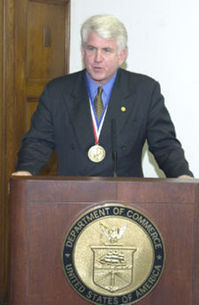(p. A19) President Barack Obama courted the Indian vote. During the campaign, he visited Montana’s Crow Reservation last May and was adopted into the tribe under the Crow name “One Who Helps People Throughout the Land.” There he said, “Few have been ignored by Washington for as long as Native Americans,” and vowed to improve their economic opportunities, health care and education.
Two vital steps in this direction are to strengthen property rights and the rule of law on reservations. Virtually every study of international development shows that both of these are crucial to prosperity. Indian country is no different. The effect of insecure property rights is evident on a drive through any western reservation. When you see 160 acres overgrazed and a house unfit for occupancy, you can be sure the title to the land is held by the federal government bureaucracy.
. . .My own research, published in the Journal of Law and Economics, shows that for tribes with state jurisdiction, per capita income grew 20% faster between 1969 and 1999 than for their counterparts under tribal court jurisdiction. All Indians are less likely than whites to get home loans, but the likelihood of a loan rejection falls by 50% on reservations under state jurisdiction.
. . .Mr. Obama’s rallying cry was “change,” and that is exactly what he needs to bring about in Indian policy. The first Americans deserve to be freed from the bureaucratic shackles that have made them victims, and allowed to establish property rights and legal systems that can make them victors.
For the full commentary, see:
TERRY L. ANDERSON. “OPINION; Native Americans Need the Rule of Law.” The Wall Street Journal (Mon., MARCH 16, 2009): A19.
(Note: ellipses in original.)







